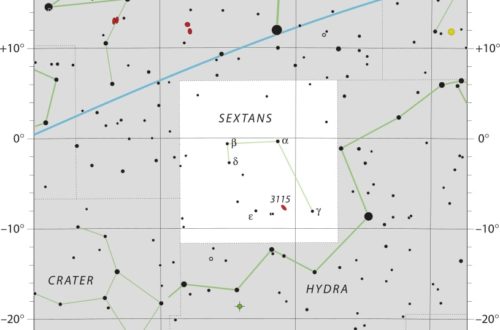Stargazing Calendar for July 2025

Stargazing in July 2025 offers countless opportunities for astronomy enthusiasts to witness conjunctions, meteor showers, and planetary highlights. It’s the perfect month to explore the wonders of the night sky.
Would you like to be notified of stargazing events?
List of Meteor Showers in July 2025
- Antihelion Source: Start on December 10; multiple peaks; end September 10.
- June Bootids: Start on June 22; peak on June 27; end on July 2.
- July Pegasids: Start on July 4; peak on July 10; end on July 17.
- Piscis Austrinids: Start on July 15; peak on July 28; end on August 10.
- Southern δ-Aquariids: Start on July 12; peak on July 30; end on August 23.
- α-Capricornids: Start on July 3; peak on July 30; end on August 15.
- η-Eridanids: Start on July 31; peak on August 8; end on August 19.
- Perseids: Start on July 17; peak on August 12; end on August 24.
We also have a complete list of meteor showers for the entire year of 2025 here.
List of Planetary Conjunctions in July 2025
- Close approach of Mercury and the Beehive Cluster in Cancer on July 3.
- Conjunction of Venus and Uranus in Taurus on July 4.
- Close approach of the Moon, Saturn and Neptune in Pisces on July 16.
- Conjunction of the Moon and Saturn in Pisces on July 16.
- Close approach of the Moon and the Pleiades in Taurus on July 20.
- Conjunction of the Moon and Venus in Taurus on July 21.
- Conjunction of the Moon and Jupiter in Gemini on July 23.
- Conjunction of the Moon and Mars in Virgo on July 28.
July 1: Messier 22 at its highest point in the sky
Messier 22 (also known as M22, NGC 6656 or the Great Sagittarius Cluster) in the constellation of Sagittarius is an elliptical globular cluster of stars near the Galactic bulge region.
At apparent magnitude 5.2, Messier 22 is easily visible with binoculars or a small telescope. The Moon will be a 6 days old, waxing crescent at 46%.
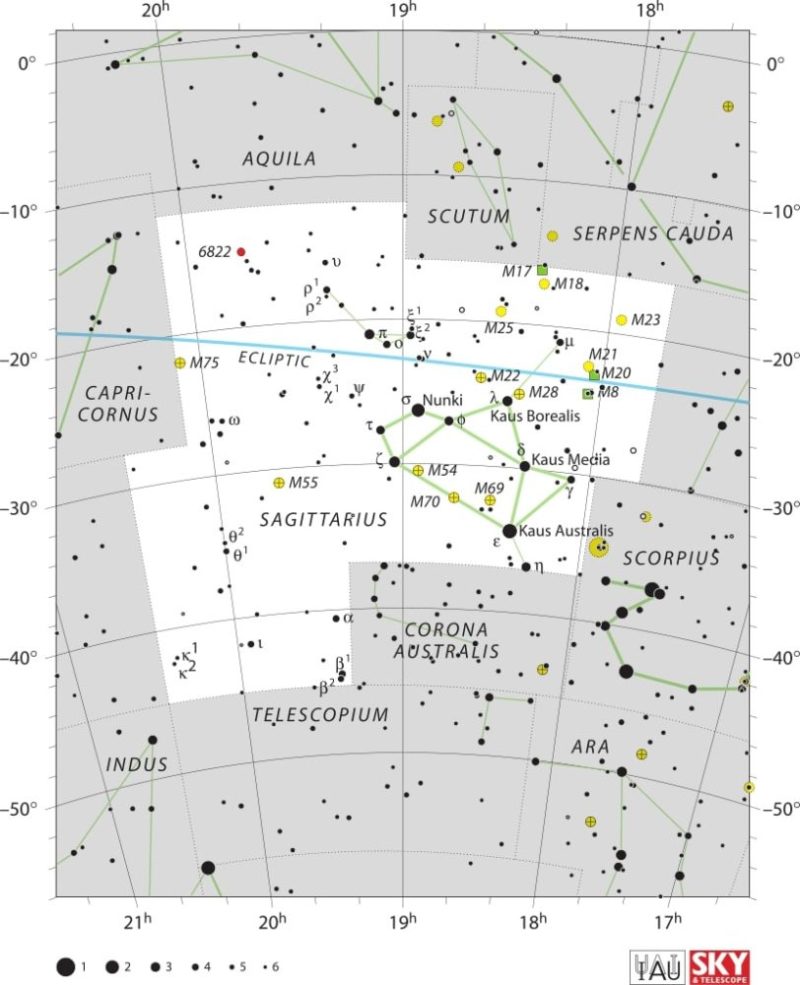
July 3: Close approach of Mercury and the Beehive Cluster
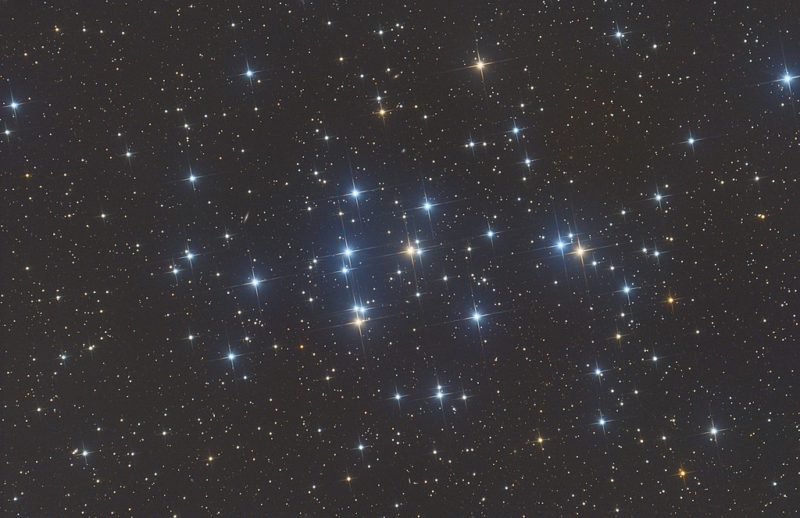
Mercury and the Beehive Cluster (also known as M44 or Messier 44) will make a close approach, passing within 1°07′ of each other.
Both objects will be in the constellation of Cancer with Mercury being at apparent magnitude 0.4; and the Beehive Cluster at 3.1. The Moon will be a 8 days old waxing gibbous at 58%.
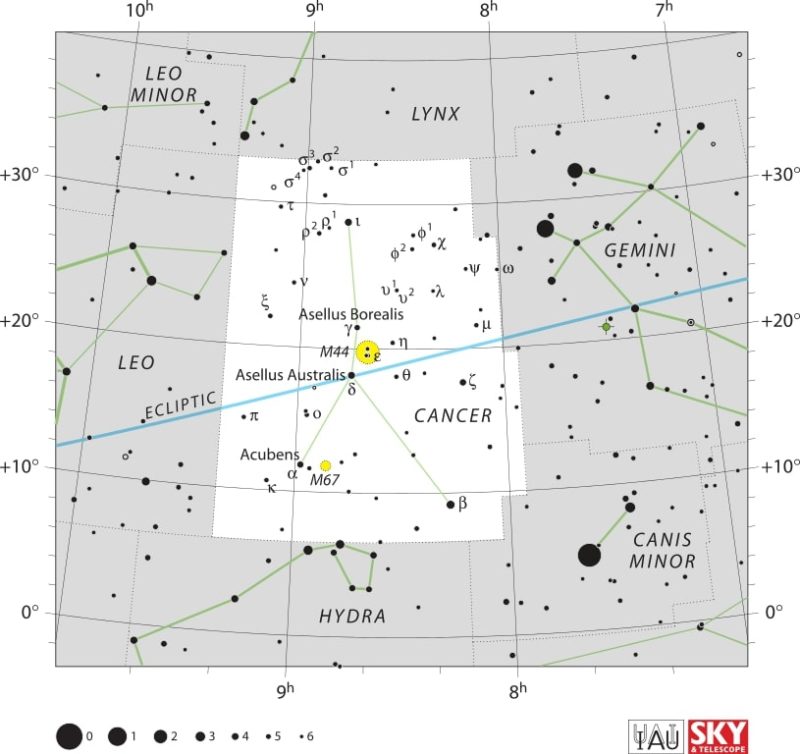
July 4: Conjunction of Venus and Uranus
Venus and Uranus will reach conjunction passing within 2°25′ of each other while sharing the same right ascension.
Venus will be at apparent magnitude -4.1 and Uranus at magnitude 5.8 both in the constellation of Taurus. The Moon will be 9 days old waxing gibbous at 66%.
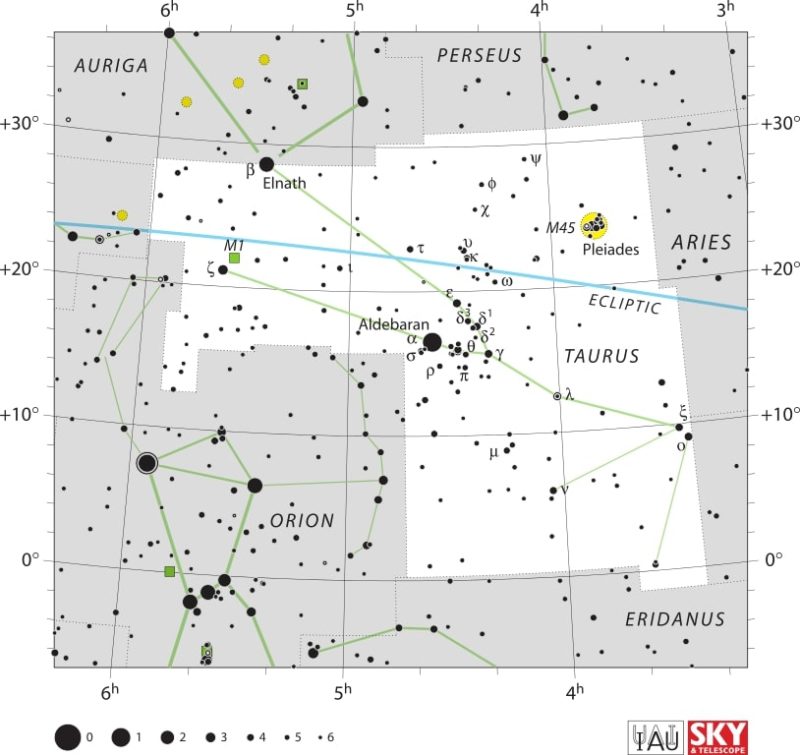
July 4: Mercury at greatest eastern elongation
Mercury will be at its highest point above the horizon in the morning sky, making it the best time to view the planet. Look for it low in the western sky just before sunrise. It will be at apparent magnitude 0.4 in the constellation of Cancer. (Constellation map already displayed above, when discussing the close approach of Mercury and the Beehive Cluster on July 3.) The Moon will be 9 days old waxing gibbous at 66%.
July 4: Neptune enters retrograde motion
Neptune will begin retrograde motion, which means it will stop traveling eastward through the constellations and instead turn to travel west. All of the outer planets in the solar system periodically experience this orientation reversal, which occurs a few months before they reach opposition.
Ancient observers were troubled by retrograde motion because it didn’t fit with their belief in uniform circular orbits around the Earth. The phenomenon is actually due to Earth’s orbit around the Sun, which shifts our perspective and causes planets to appear to move back and forth in the sky while continuing their overall eastward path through the constellations.
Neptune can be spotted in the constellation of Pisces with an apparent magnitude of 7.9.
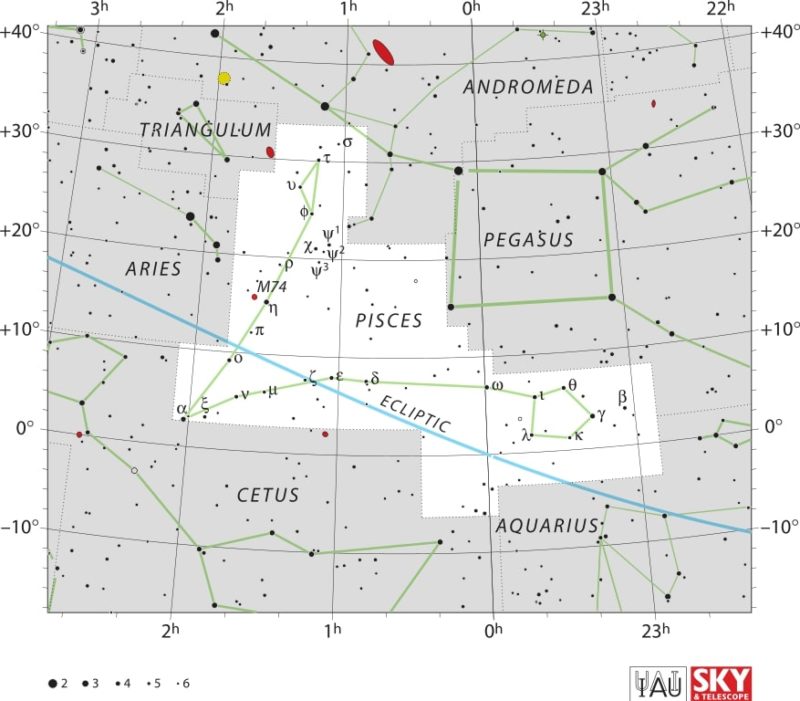
July 10: July Pegasid meteor shower peak
The July Pegasids are a small meteor shower with an average of 3 meteors per hour (ZHR) during the peak if conditions are ideal.
Some meteors may also be spotted between July 4 and 17, enriching your stargazing this summer of 2025. They will radiate from the constellation of Pegasus at the speed of 65 km/s on average.
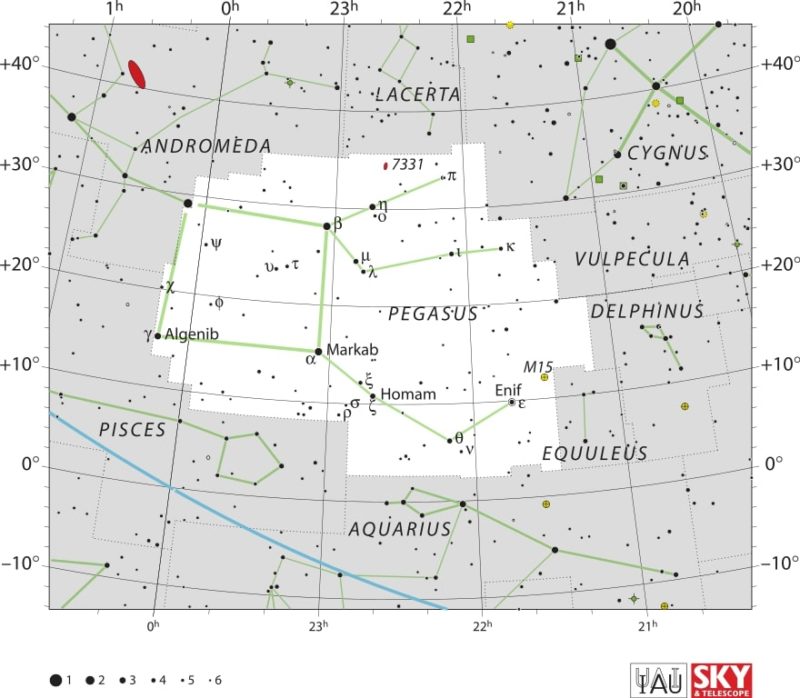
July 13: Saturn enters retrograde motion
Saturn will begin retrograde motion, which means it will stop traveling eastward through the constellations and instead turn to travel west. Saturn can be spotted in the constellation of Pisces with an apparent magnitude of 0.7. (Constellation map already displayed above, when discussing Neptune entering retrograde motion on July 4.)
July 16: Close approach of the Moon, Saturn and Neptune
The Moon, Saturn and Neptune will make a close approach (appulse) passing within 3°22′ of each other.
The Moon will be at apparent magnitude -12.3, Saturn at magnitude 0.7, and Neptune at magnitude 7.9, all in the constellation of Pisces. (Constellation map already displayed above, when discussing Neptune entering retrograde motion on July 4.) The Moon will be a 21 days old waning gibbous at 62%.
July 16: Conjunction of the Moon and Saturn
The Moon and Saturn will reach conjunction passing within 3°50′ of each other while sharing the same right ascension.
The Moon will be at apparent magnitude -12.3 and Saturn at magnitude 0.7 both in the constellation of Pisces. (Constellation map already displayed above, when discussing Neptune entering retrograde motion on July 4.) The Moon will be a 21 days old waning gibbous at 62%.
July 20: Close approach of the Moon and the Pleiades
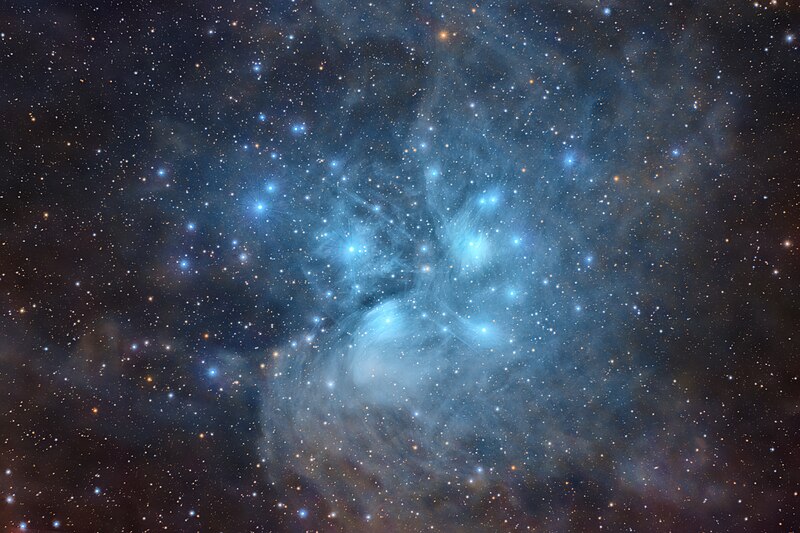
The Moon and the Pleiades star cluster (M45) will make a close approach or appulse, by passing within 46.3 arcminutes of each other. This will happen in the constellation of Taurus. (Constellation map already displayed above, when discussing the conjunction of Venus and Uranus on July 4.)
You can observe this astronomical event with the naked eye because the Moon will be at apparent magnitude -11.1 and M45 at 1.3. The Moon will be 25 days old, meaning it will be a waning crescent at 18% and won’t interfere much with stargazing this late July 2025.
July 21: Conjunction of the Moon and Venus
The Moon and Venus will be at conjunction by sharing the same right ascension and passing within 7°07′ of each other.
Look for the two bodies in the constellation of Taurus. (Constellation map already displayed above, when discussing the conjunction of Venus and Uranus on July 4.) The Moon will be a 26 days old, very thin waning crescent at 7%. Despite this, the Moon will still be at apparent magnitude of -10.4, while Venus will be at magnitude -4.0.
July 23: Conjunction of the Moon and Jupiter
The Moon and Jupiter will be at conjunction by sharing the same right ascension and passing within 4°54′ of each other.
The two celestial bodies will meet in the constellation of Gemini with the Moon at apparent magnitude of -9.1 and Jupiter at -1.9. The Moon will be a 28 days old waning crescent at 1% just a day away from new moon.
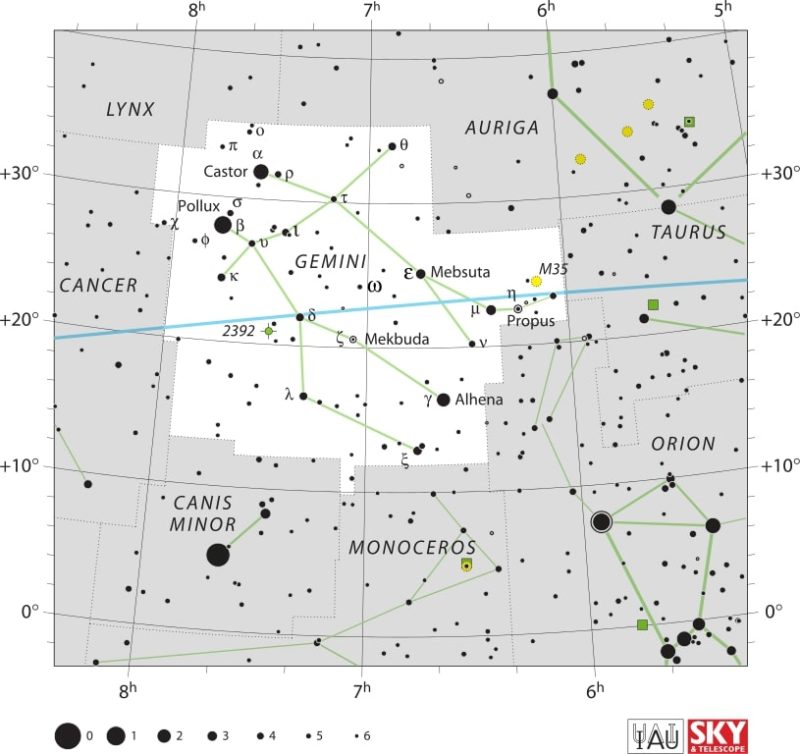
July 25: Dwarf planet Pluto at opposition
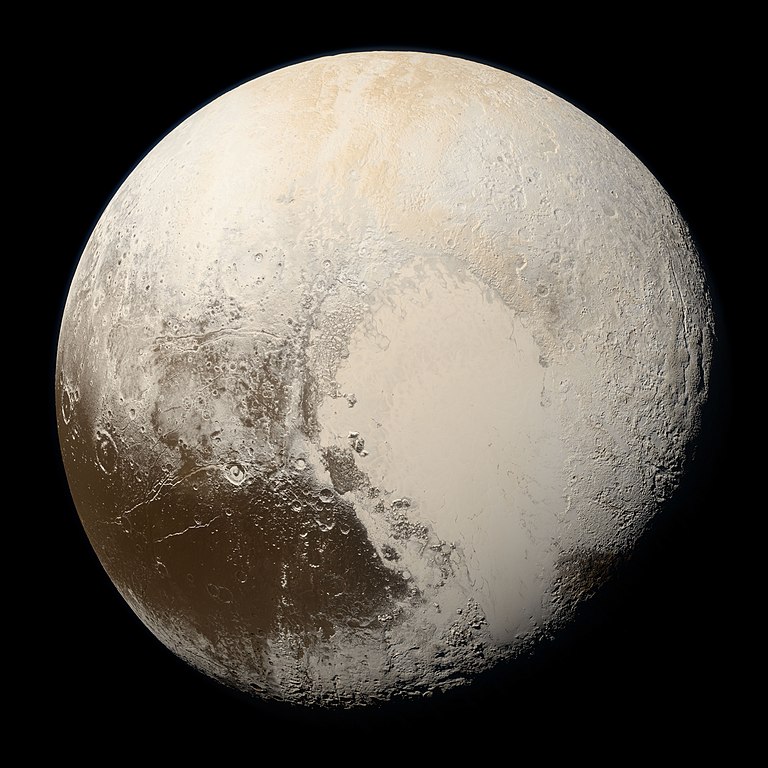
The dwarf planet Pluto (minor planet designation 134340 Pluto) will reach its highest point in the sky at around midnight local time because it will be exactly opposite to the Sun in the sky.
At about the same time, Pluto will also reach perigee, the closest point to the Earth, at 34.30 AU from Earth. It’s at this time that Pluto will be brightest in the sky. Despite this, you will need a telescope to spot this dwarf planet because it will have an apparent magnitude of only 15.0. Look in the constellation of Capricornus. The Moon will be a 1 day old waxing crescent at 1%.
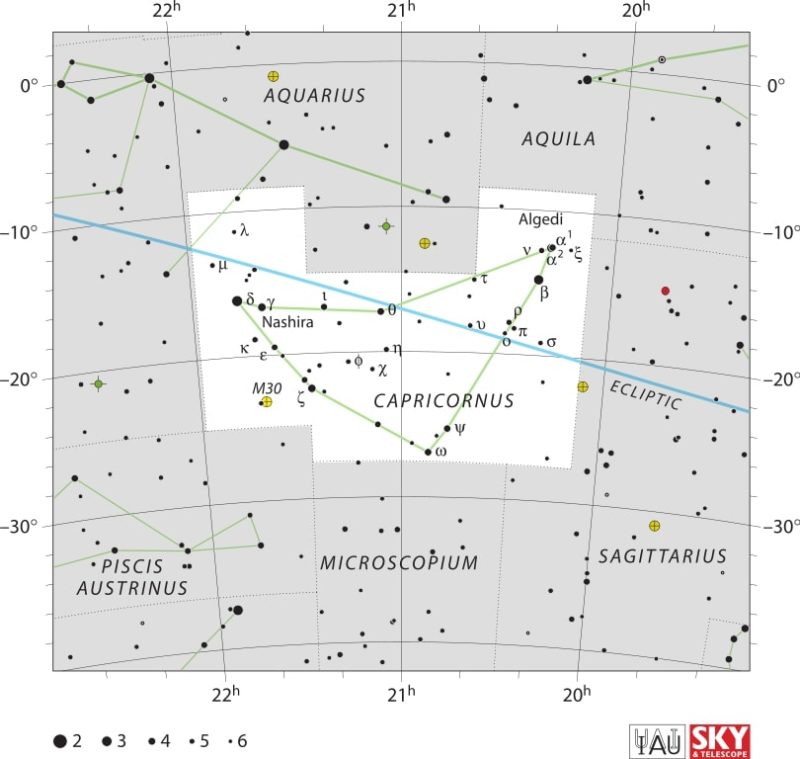
July 28: Conjunction of the Moon and Mars
The Moon and Mars will be at conjunction by sharing the same right ascension and passing within 1°17′ of each other.
Around the same time, the two bodies will also make a close approach (appulse) reaching 1°07′ from each other, but not sharing the same right ascension.
Look for the two bodies in the constellation of Virgo. The Moon will be at apparent magnitude of -10.7, while Mars will be at magnitude 1.6. The Moon will be waxing crescent (20%) at 4 days old.
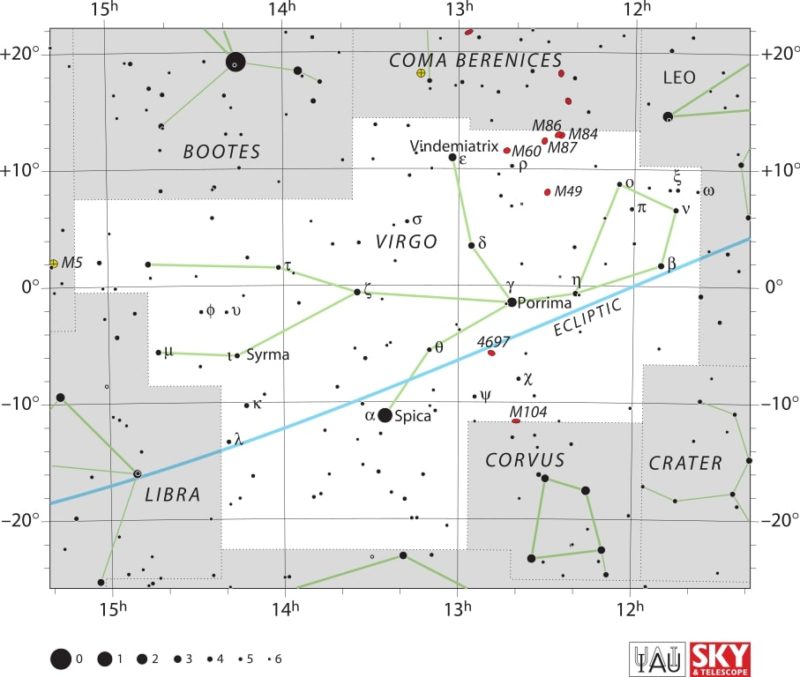
July 28: Piscis Austrinid meteor shower peak
The Piscis Austrinids is a variable rate meteor shower peaking on July 28. Some meteors may also be spotted between July 15 and August 10. They will radiate from the southern constellation of Piscis Austrinus at the speed of 35 km/s on average.
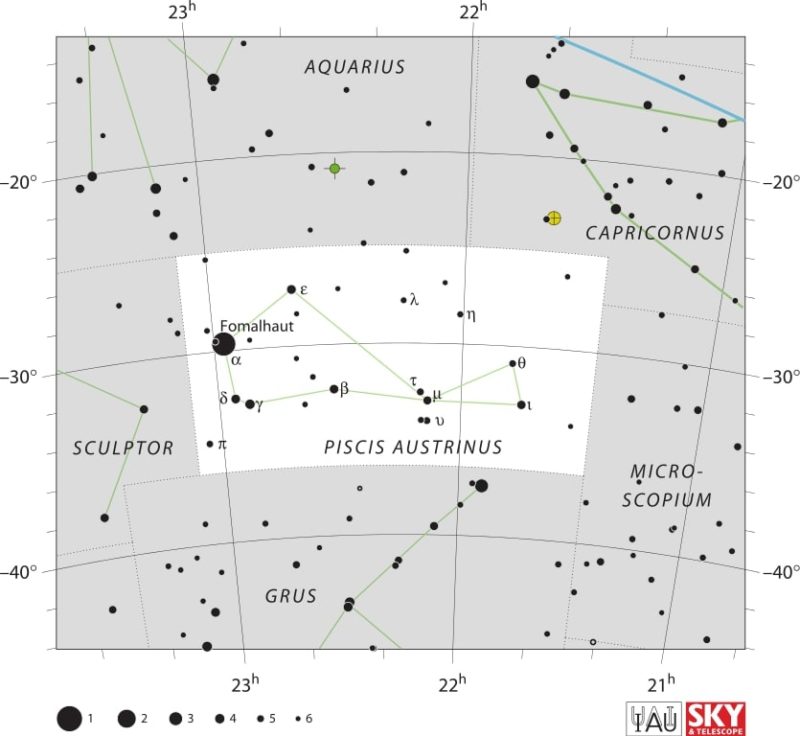
July 30: Southern δ-Aquariid meteor shower peak
The Southern Delta Aquariids will peak this July 2025 with a zenithal hourly rate of 25 if stargazing conditions are ideal. With the Moon a 6 days old waxing crescent at 33%, the conditions will be close to ideal, baring unfavorable atmospheric conditions.
Some meteors may also be spotted between July 12 and August 23. They will radiate from the constellation of Aquarius, near one of the constellation’s brightest stars, Delta Aquarii, at the speed of 41 km/s on average. The meteors from this shower originate from comet 96P Machholz.
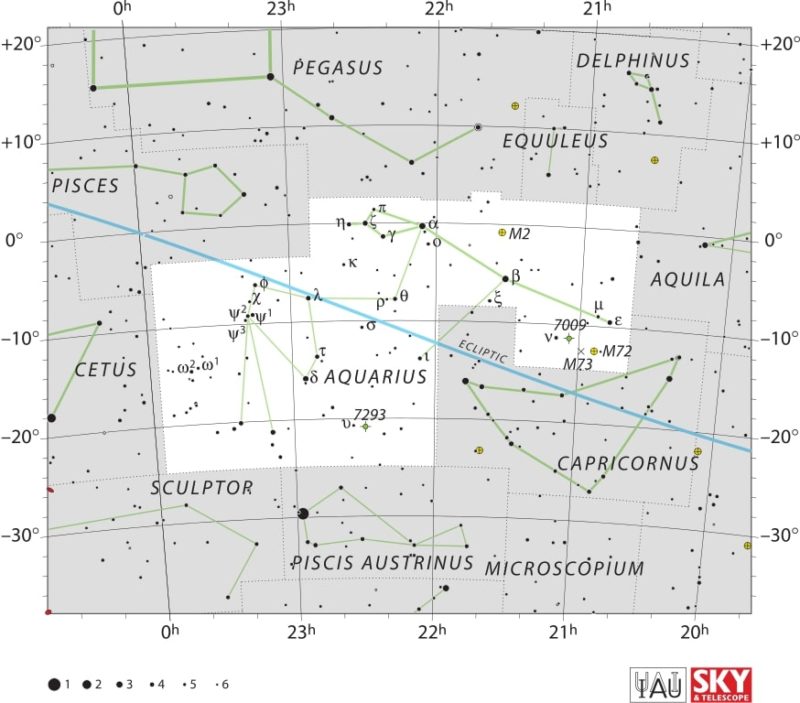
July 30: α-Capricornid meteor shower peak
The Alpha Capricornids will peak with a zenithal hourly rate of 5 if stargazing conditions are good.
Some meteors may also be spotted between July 3 and August 15. They will radiate from the constellation of Capricornus, at the low speed of 23 km/s on average. (Constellation map already displayed above, when discussing dwarf planet Pluto at opposition on July 25.) The meteors originate from comet 169P/NEAT, which was once thought to be an asteroid named 2002 EX12.
Moon Phases in July 2025
As you know, the Moon has a big impact on the visibility of celestial bodies and astronomical events in the night sky. So to help you with stargazing, here’s a calendar of the phases of Moon for this month of July 2025:
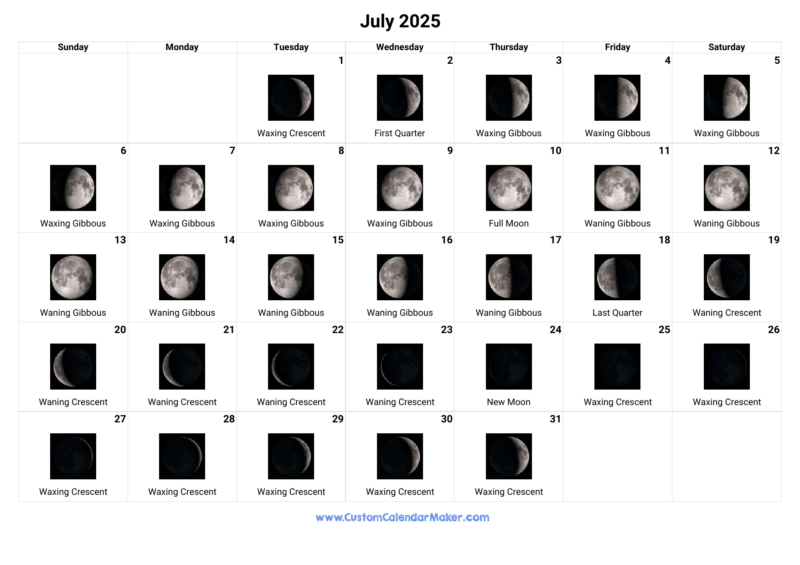
Positions of the Planets in July 2025
- Mercury: The closest planet to the Sun can be seen at dawn and dusk travelling across the constellation of Cancer. This planet, being the closest to the Sun, will appear to move quickly in the night sky and its position will change in the following weeks.
- Venus: The sister planet can be seen travelling across the constellation of Taurus. Just like Mercury, Venus can only be seen at dawn and dusk.
- Mars: The red planet can be seen in the constellation of Leo, then Virgo.
- Jupiter: The gas giant is visible in the constellation of Gemini. Jupiter can easily be spotted with the naked eye, even in highly illuminated cities.
- Saturn: The ringed giant can be seen with the naked eye in the constellation of Pisces.
- Uranus: The ice giant can be seen in the constellation of Taurus with the use of a telescope.
- Neptune: The blue giant requires a telescope pointed in the constellation of Pisces in order to be seen.
Positions of Dwarf Planets and Large Asteroids in July 2025
- Ceres: The asteroid belt’s lone dwarf planet can be seen in the constellation of Cetus with the help of a telescope.
- Vesta: This large asteroid can be seen in the constellation of Virgo with a telescope.
- Pallas: The asteroid can be observed with a telescope in the constellation of Delphinus.
- Hygiea: The fourth largest asteroid can be found with a telescope in the constellation of Taurus.
- Pluto: This distant dwarf planet can be found in the constellation of Capricornus with the help of a large telescope.
Major astronomical events next month – August 2025
- August 3: Asteroid 63 Ausonia at opposition
- August 8: η-Eridanids meteor shower peak
- August 10: Asteroid 2 Pallas at opposition
- August 10: Asteroid 89 Julia at opposition
- August 12: Perseids meteor shower peak
- August 17: κ-Cygnids meteor shower peak
- August 25: Asteroid 6 Hebe at opposition
- August 31: Aurigids meteor shower peak
Conclusion
Stargazing in July 2025 promises an exciting array of astronomy events, from planetary conjunctions and close approaches involving the Moon, Mercury, Venus, Mars, and Jupiter, to the peak of several meteor showers like the Southern Delta Aquariids and Alpha Capricornids. Whether you’re watching Messier 22, observing Pluto at opposition, or catching the July Pegasid meteors, this month is packed with opportunities to explore the night sky and deepen your passion for astronomy.
To ensure you don’t miss out on any celestial happenings, sign up for our newsletter to receive stargazing calendars and more updates. Keep your telescopes ready and clear your calendar for these cosmic highlights!
Sources:
- Planetary ephemerides produced by NASA’s Jet Propulsion Laboratory (JPL)
- International Meteor Organization
See also:
- Previous month’s calendar: Stargazing Calendar for June 2025
- Next month’s calendar: Stargazing Calendar for August 2025
Would you like to receive similar articles by email?




